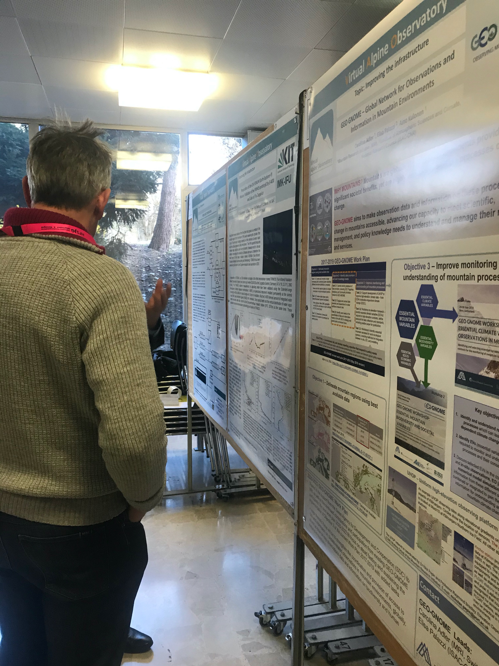The Annual Symposium of the Virtual Observatory (VAO) brought its members and guests to Bern to present the latest applications of the VAO data, their network in the Alps, and their latest research.
The Virtual Alpine Observatory (VAO), hosted at the Bavarian State Ministry of the Environment and Consumer in Germany, is a network of European High-Altitude Research Stations including ten countries (Austria, Bulgaria, Czech Republic, France, Germany, Georgia, Italy, Norway, Slovenia, and Switzerland). The data collected by VAO contribute significantly to the monitoring, understanding, and forecasting of Earth system processes, and the cross-border and interdisciplinary nature of VAO data contribute to multidisciplinary and transboundary research applications.

On 4-6 February 2020, the 5th VAO Symposium took place at the University of Bern to present its latest research and technologies but also to discuss new project initiatives and engage with the broader observatories and data provider communities. Over the three days, sessions were organized with a focus on atmospheric and climatic variability, climate impacts on Alpine environments, Alpine water cycles, environment and human health, and infrastructure.

Of specific relevance to GEO-GNOME was Session V: “Improving the VAO Infrastructure” chaired by Professor Heinz Gäggeler. This session highlighted efforts in making in-situ and Earth observation data available and harmonising it for potential integration and for diverse end-user applications. Case studies and discussions had showcased a variety of ways to utilize the VAO data but also identified key challenges that arise when the same data is available through different platforms.
GEO-GNOME presented its current work and plans as part of its recently endorsed implementation plan for 2020-2022, with a poster showcasing key activities such as identifying Essential Variables for mountains. The poster session offered a valuable opportunity to learn about data, infrastructure, and platforms that VAO offers, and discuss how GEO-GNOME can build on and link to such existing facilities on mountains.
The symposium concluded with the identification of steps needed for combining data from different sources, harmonising and standardising in-situ observation data needs – similar to the data harmonisation processes that are already being carried out for Earth Observation data.
The symposium was supported and co-organised by the Schweizerische Kommission für Atmosphärenchemie und -physik (ACP) and the International Foundation High Altitude Research Stations Jungfraujoch and Gornergrat (HFSJG).
Cover photo by Pixabay user xuuxuu.
All other photos by Dr Aino Kulonen.


